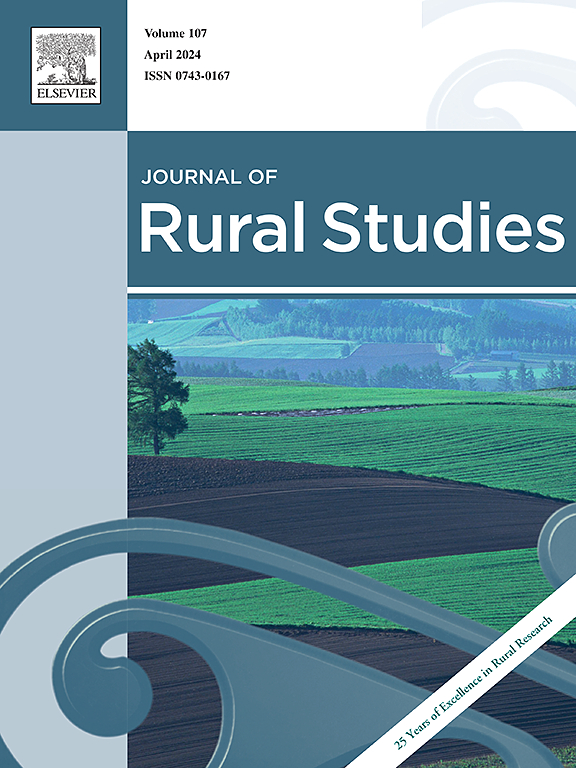澳大利亚农村和偏远地区政策驱动的社区发展:利用社区资本框架对大学农村卫生系的分析
IF 5.7
1区 社会学
Q1 GEOGRAPHY
引用次数: 0
摘要
虽然社区发展是由地方推动的,但它也可以来自政府投资。澳大利亚政府为全国19所大学的农村卫生系(UDRHs)提供了资金,作为解决农村和偏远地区卫生人力短缺问题的一步。这些地方卫生保健中心培训学生、开展研究并支持地方卫生服务和社区。虽然已经评估了一些UDRH的贡献,但对UDRH对农村和偏远社区的影响缺乏了解。本文试图通过应用社区资本框架来理解可持续发展住房的影响。来自六个发展中国家发展中心的高级工作人员开发了实例和案例研究。分析发现,这些大学中心增强了各种形式的社区资本。首先是金融投资(金融资本)和自然资本,然后是基础设施投资(建筑资本)和农村和偏远地区工作人员就业(人力资本)。土著居民发展中心将学生带到各区域(财政和人力资本),与当地伙伴开展项目(社会资本),壮大原住民劳动力(文化资本),并倡导地方和更广泛的健康问题(政治资本)。实例和案例研究表明,这些大学院系如何拥有资金、人员、基础设施和伙伴关系,以进一步利用其所在地区的社区发展。该计划成功的关键是灵活性、广泛性和确保资金用于其所在地区。这一分析要求提高对社区发展中的智力资本的理解,以增加对大学如何投资社区发展倡议的洞察力。本文章由计算机程序翻译,如有差异,请以英文原文为准。

Policy driven community development in rural and remote Australia: Analysis of University Departments of Rural Health using the Community Capitals framework
While community development is locally driven, it can stem from government investment. The Australian government has funded 19 University Departments of Rural Health (UDRHs) across Australia as one step to address health workforce shortages in rural and remote regions. These UDRHs train students, conduct research and support local health services and communities. While some UDRH contributions have been assessed, there is a lack of understanding of the impact of UDRHs for their rural and remote communities. This paper seeks to understand the impacts of UDRHs through application of the Community Capitals framework. Examples and case studies were developed by senior staff from six UDRHs. This analysis found that these university centres enhanced various forms of community capital. Beginning with financial investment (financial capital) and working to natural capital, investment in infrastructure (built capital) and employment of staff in rural and remote regions (human capital) followed. UDRHs bring students to the regions (financial and human capital), undertake projects with local partners (social capital), grow the First Nations workforce (cultural capital) and advocate for local and broader health issues (political capital). Examples and case studies demonstrated how these university departments have funds, staff, infrastructure and partnerships to leverage further community development in, with, and for their regions. Key to success of this program is flexibility, breadth and ensuring funds are spent in their region. This analysis calls improved understanding of intellectual capital in community development to increase insight into how universities can invest in community development initiatives.
求助全文
通过发布文献求助,成功后即可免费获取论文全文。
去求助
来源期刊

Journal of Rural Studies
Multiple-
CiteScore
9.80
自引率
9.80%
发文量
286
期刊介绍:
The Journal of Rural Studies publishes research articles relating to such rural issues as society, demography, housing, employment, transport, services, land-use, recreation, agriculture and conservation. The focus is on those areas encompassing extensive land-use, with small-scale and diffuse settlement patterns and communities linked into the surrounding landscape and milieux. Particular emphasis will be given to aspects of planning policy and management. The journal is international and interdisciplinary in scope and content.
 求助内容:
求助内容: 应助结果提醒方式:
应助结果提醒方式:


